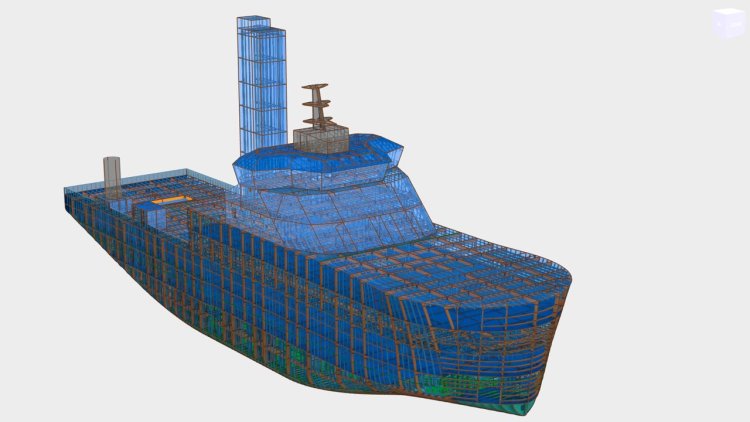DNV, Damen and NAPA use 3D model-based approval to streamline ship design approval
Damen, DNV and NAPA are taking a major step forward in ship design processes by using the new Open Class 3D Exchange (OCX) standard to streamline classification involvement in the early phase of a project.

Damen Engineering decided to involve DNV classification experts in the first review of its new design of a Commissioning Service Operation “Walk to Work” Vessel (CSOV 9020).
Collaboration started during work on the Design Proposal, the very first stage of the project, using new cutting-edge technology based on 3D model exchange and approval through the OCX file format.
The new CSOV design was developed by Damen engineers using NAPA’s 3D design tools, which enable the export of 3D models in the OCX format. This functionality allowed Damen and DNV to work in parallel on the same 3D model, saving the time and effort needed to agree and prepare 2D documentation.
Katarzyna Romantowska-Jaskólska, Manging Director at Damen Engineering, said:
“Environmental, safety, regulatory and other external pressures, combined with the competitive need to create ever-better designs, mean doing things the way we always did them is no longer sufficient. The OCX format allows us to take a new approach that is beneficial to everyone involved in the development of a vessel design, and the project execution process. In collaboration with DNV and NAPA, we arrived at a solution that connects disciplines and facilitate quick decision making while reducing risks in the early stages of a design.”
Mikko Forss, Executive Vice President for Design Solutions at NAPA, added:
“At NAPA, streamlining the hull structure approval process through efficient collaboration and swift feedback loops among stakeholders is one of our top priorities. As a result of several joint industry development projects, NAPA’s 3D design solutions can support efficient information exchange between ship designers and classification societies, enabling quicker and more accurate approvals. Our support for the OCX format is a key part of this effort, as it enables the standardized exchange of 3D model data and reduces the time and effort required for efficient communication.”
Ivar Håberg, Director of Approval at DNV, concluded:
“The earlier class starts the design approval process, the easier it is to find good rule compliant design solutions in cooperation with the yards. By using the OCX file format to exchange information on 3D design models, DNV can more efficiently interact and cooperate with the designers and yards already in the early design development phase.”
OCX is a new standard for 3D model-based class approval, aimed at breaking down the barriers between different design and classification software platforms to enable the seamless exchange of idealized geometry and metadata between them. The OCX 3D model can also replace the traditional 2D structure drawings for classification purposes, thereby saving time for the yards, and allowing class to respond more quickly to designers' needs.
The OCX standard is the result of the joint industry project ‘Approved (2016-2020)’ headed by DNV. The standard is now jointly owned and managed by the OCX Consortium established in 2021. This consortium has brought together more than 30 industry leaders to jointly promote and maintain the standard. The consortium members consist of all the major classification societies, leading CAD providers and several designers and yards.

























































































































































